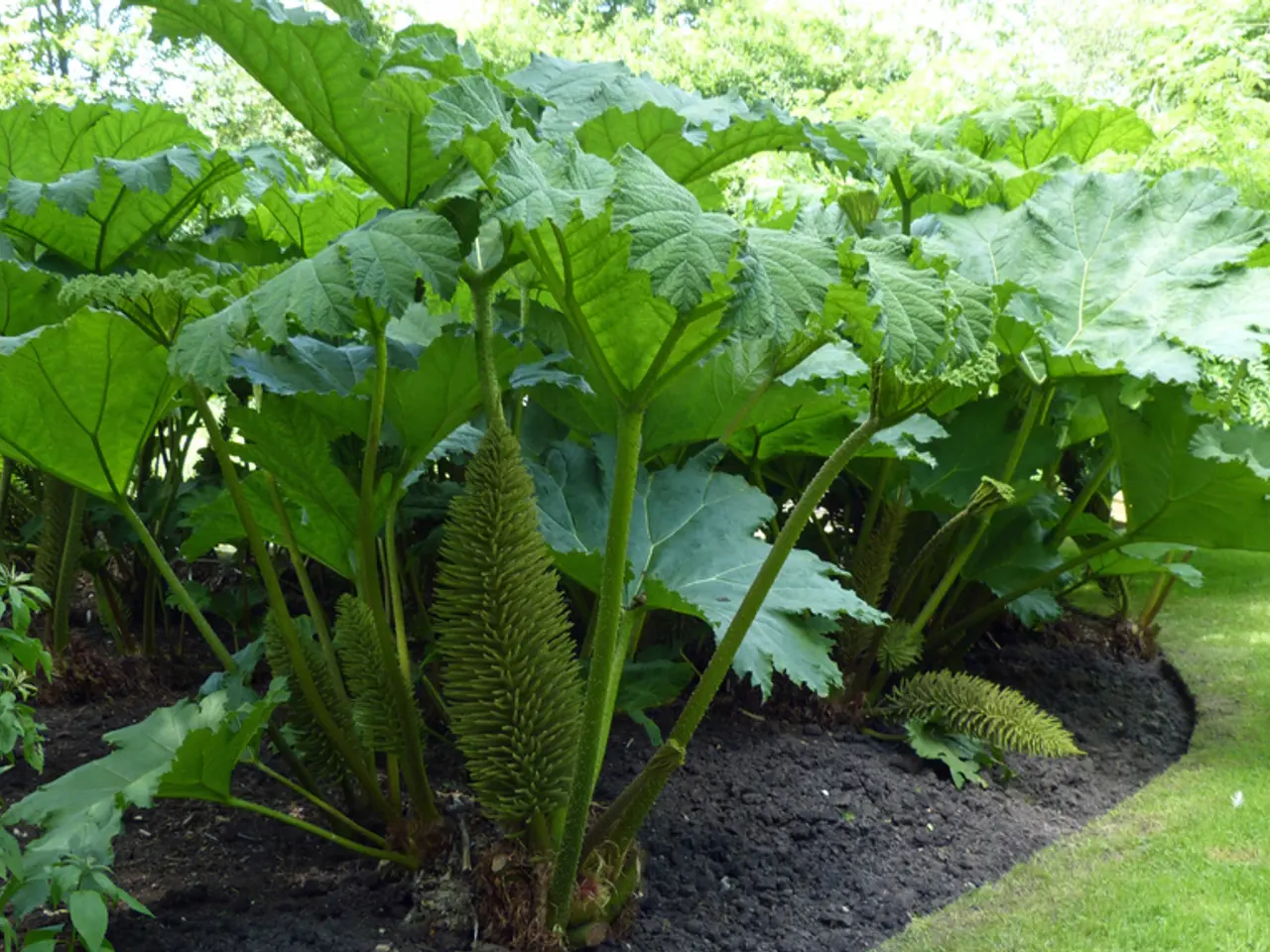Revitalizing Soil with Nitrogen: Strategic Planting for Fertility Enhancement
In the realm of agriculture, leguminous plants play a pivotal role in enriching soil fertility through a unique symbiotic relationship with nitrogen-fixing bacteria. This process, known as nitrogen fixation, is instrumental in converting atmospheric nitrogen into a form that plants can use, reducing the need for synthetic fertilizers.
At the heart of this symbiosis are leguminous plants like beans, peas, soybeans, and alfalfa, which host Rhizobium bacteria. These bacteria infect the root hairs of the legume, inducing the formation of specialized structures called root nodules. Inside these nodules, the bacteria convert atmospheric nitrogen (N₂) into ammonia (NH₃) through a process catalyzed by the enzyme nitrogenase.
The process unfolds in several steps. First, the plant produces leghemoglobin, a molecule that binds oxygen, creating an oxygen-free environment within the nodules necessary for nitrogenase activity. Next, nitrogenase catalyzes the conversion of N₂ to ammonia (NH₃), a form of nitrogen plants can assimilate. The plant then converts this ammonia into amino acids like glutamate, which are used to synthesize proteins and other biomolecules. In return, the plant supplies carbohydrates and a protected environment to the bacteria, which in turn provide the plant with fixed nitrogen.
Major nitrogen-fixing legumes include beans (Phaseolus spp.), peas (Pisum sativum), lentils (Lens culinaris), soybeans (Glycine max), alfalfa (Medicago sativa), and clover (Trifolium spp.). These plants are commonly used in crop rotations and sustainable agriculture to enrich soil nitrogen naturally.
In addition to legumes, some non-leguminous plants, such as alders (Alnus spp.), form symbiotic relationships with Frankia, a filamentous, nitrogen-fixing actinobacterium. Free-living soil bacteria like Azotobacter and Clostridium also fix atmospheric nitrogen without plant association, contributing to soil fertility.
Legume-driven nitrogen fixation is now nearly as significant globally as natural nitrogen fixation in non-agricultural ecosystems, primarily due to large-scale cultivation of crops like soybeans and alfalfa. This biological process is crucial for sustainable food production but can also contribute to nitrogen pollution if not managed properly, due to the release of excess nitrogen into the environment.
To maximise the opportunity to fix nitrogen, legumes should be sown in early autumn. They can be used as cover crops to take up nitrogen from the soil and prevent it from leaching into the groundwater, capturing between 30 and 120 kg N/ha before spring. Additionally, legumes like lupins and buckwheat are good options for increasing phosphate mobility in the soil, while cruciferous crops such as winter rape or fodder radish can prevent sulphur leaching.
Composting is another effective method for returning nitrogen to the soil and improving soil health and fertility. A balanced carbon-to-nitrogen ratio (C/N ratio) of about 30:1 is ideal for the activity of the microbes in the compost. Controlling the materials included in the compost or adding nitrogen from fertilizer or organic materials high in nitrogen, such as manure or grass clippings, can help achieve this balance.
In conclusion, legumes offer a sustainable and environmentally friendly solution for improving soil fertility and reducing the need for synthetic fertilizers. By understanding the process of nitrogen fixation and harnessing the power of these remarkable plants, we can contribute to a healthier and more sustainable agricultural landscape.
Science plays a vital role in the health-and-wellness of our soil, as leguminous plants like beans, peas, soybeans, alfalfa, and lentils, host Rhizobium bacteria to enrich soil fertility through nitrogen fixation. This symbiotic relationship, consisting of several steps such as the production of leghemoglobin and the conversion of atmospheric nitrogen into ammonia, facilitates the formation of amino acids and enhances soil nutrients, contributing to the wider realm of health-and-wellness in fitness-and-exercise and nutrition.




